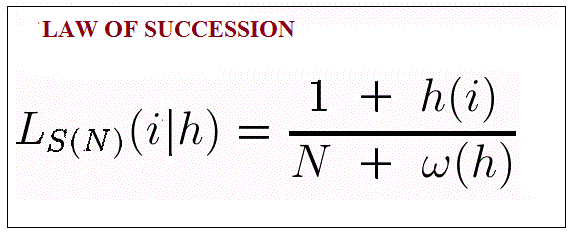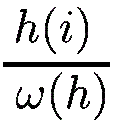Lovegrove Mathematicals
"Dedicated to making Likelinesses the entity of prime interest"
Lovegrove Mathematicals
"Dedicated to making Likelinesses the entity of prime interest"

Partition the expression on the RHS by drawing a vertical line through the + signs. On the left, we have
 ;
this is LS(N)(i). On the right, we have
;
this is LS(N)(i). On the right, we have
 ;
this is RF(i|h). Consequently,
;
this is RF(i|h). Consequently,
 lies weakly between LS(N)(i) and RF(i|h).
lies weakly between LS(N)(i) and RF(i|h).
Over the years, it has had a very bad press, partly because of that confusion. The main reason, however, was because Laplace mishandled his presentation of it. In seeking to demonstrate when the Law of Succession should not be used, he purposely gave the silly example of calculating the probability that the Sun will rise tomorrow. Unfortunately, he did not say that it was silly until after he had given it, by which time the damage had been done in the readers' minds.
Laplace's own version was about the degree 2 case. It was later extended by others to the degree N case used here.